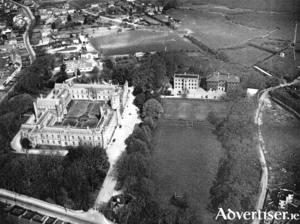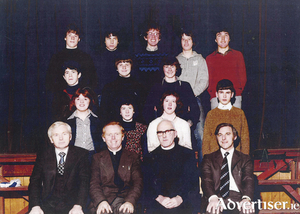Search Results for 'Model School'
4 results found.
Queen’s College, Galway, the early days

The Queen’s Colleges in Galway, Cork, and Belfast were established in 1845, and shortly afterwards, construction of the quadrangular building started in Galway. In May, 1847, despite the Famine, William Brady, the contractor for the building, advertised for 30 stone cutters and 30 stonemasons. Large working sheds were erected on the site so that the work could be carried out in inclement weather. There was no big rush to work from the stone men as the money he offered was below the going rate, but as it was a long term job with shelter provided, so it had a security of employment not available on other building projects, In the end, the building of the college did have a beneficial effect on the depressed conditions in Galway at the time.
St Nicholas’ Parochial School

This Church of Ireland school is situated in Waterside beside the courthouse and the Town Hall, The earliest existing school records date back to 1901 to the Model School which was situated on Upper Newcastle Road. It had opened in 1852 with 400 pupils, many of whom were Catholics. This proved too much for the then Catholic bishop who set out to make way for explicitly Catholic education in Galway. He invited the Mercy Sisters and the Patrician Brothers to set up schools here and made it a ‘reserved sin’ for Catholic parents to send their children to the Model School. This resulted in 199 pupls withdrawing and meant the end of multi-denominational education in the city.
The Model School

The Model School on Newcastle Road was built in 1849/50 for a cost of £2,533 plus £800 for the furniture. It was one of a series of Model Schools built around that time and was the only one constructed under budget. It opened in July 1852, 170 years ago this month. It catered for Protestant children.
The first co-ed class in the Jes

St Ignatius College’ on Sea Road opened its doors for the first time in 1862. The Jesuits built a residence and a church at the same time and the move proved to be a success for them. Attendances at Mass and ceremonies grew rapidly. The college, however, was more of a challenge. The boys ranged in age from nine to 13 and the subjects taught included mathematics, Latin, Greek, and elocution. The numbers at first were as expected. They grew steadily to 90 in 1865 and reached 110 by 1874, but they began to fall thereafter and were inconsistent from year to year. The number recorded for 1899 was 49.

